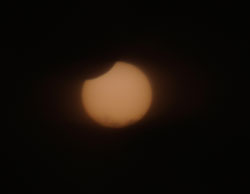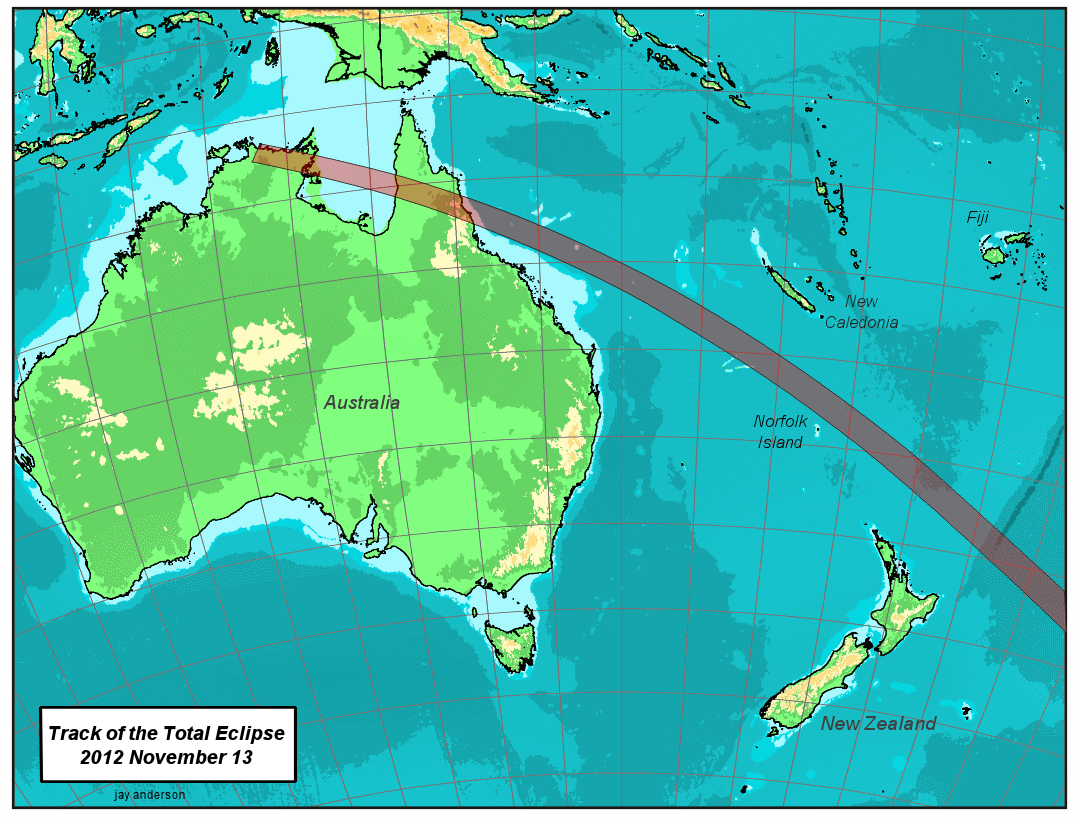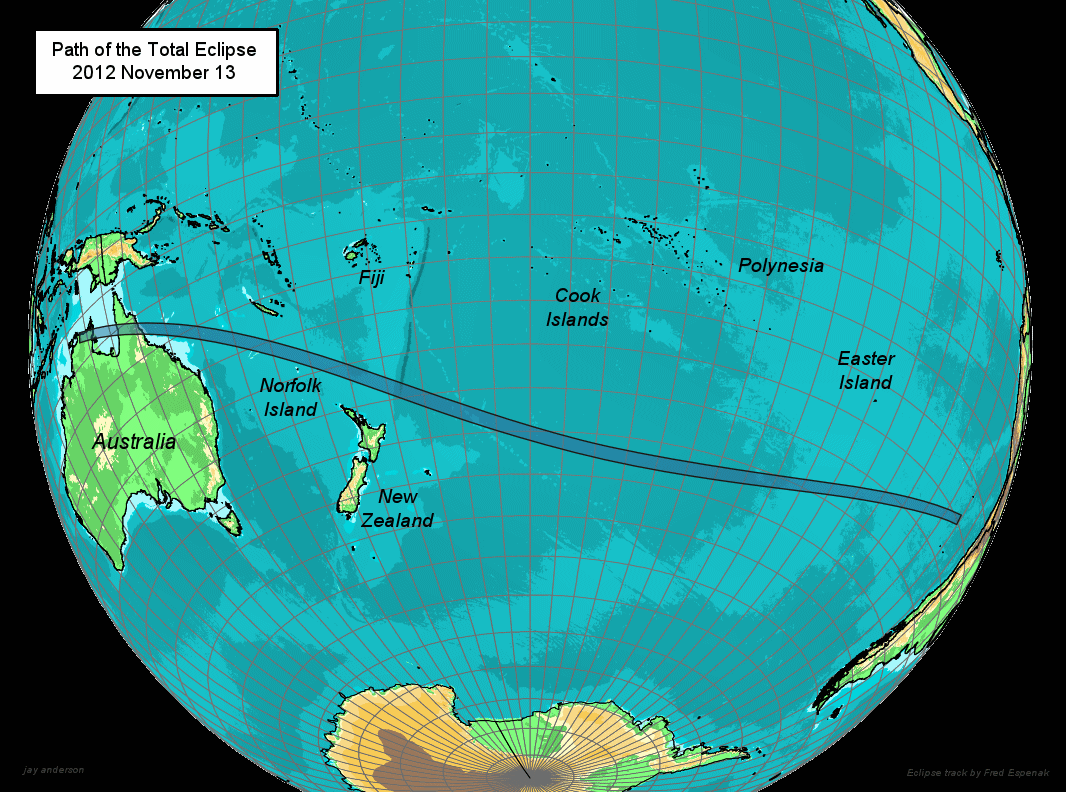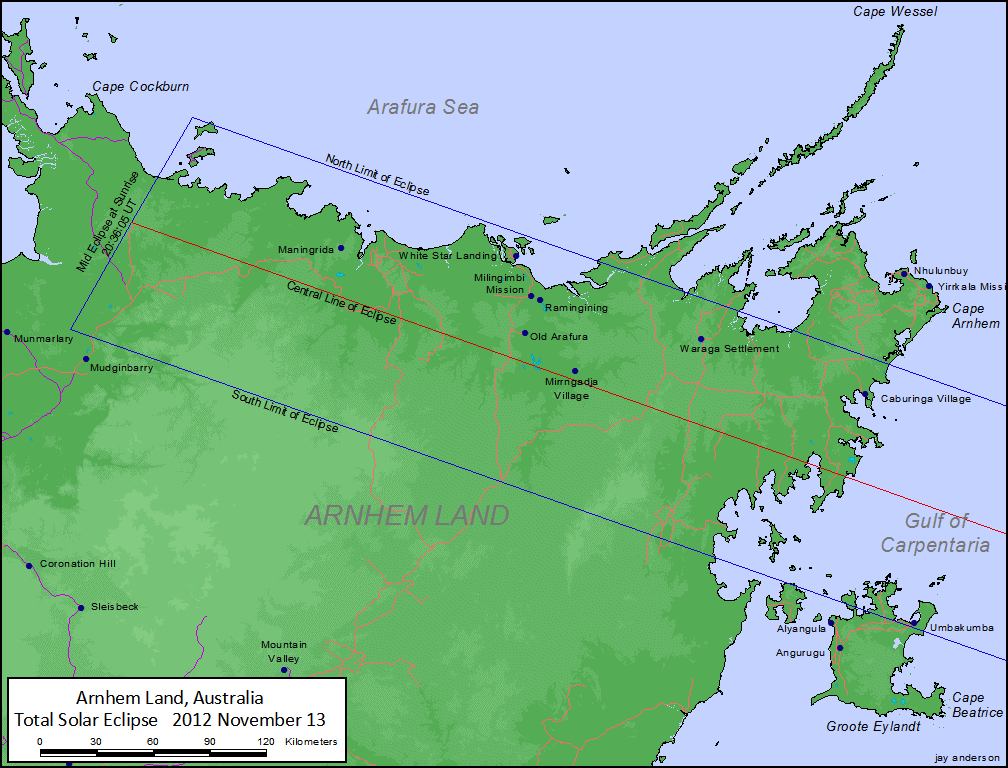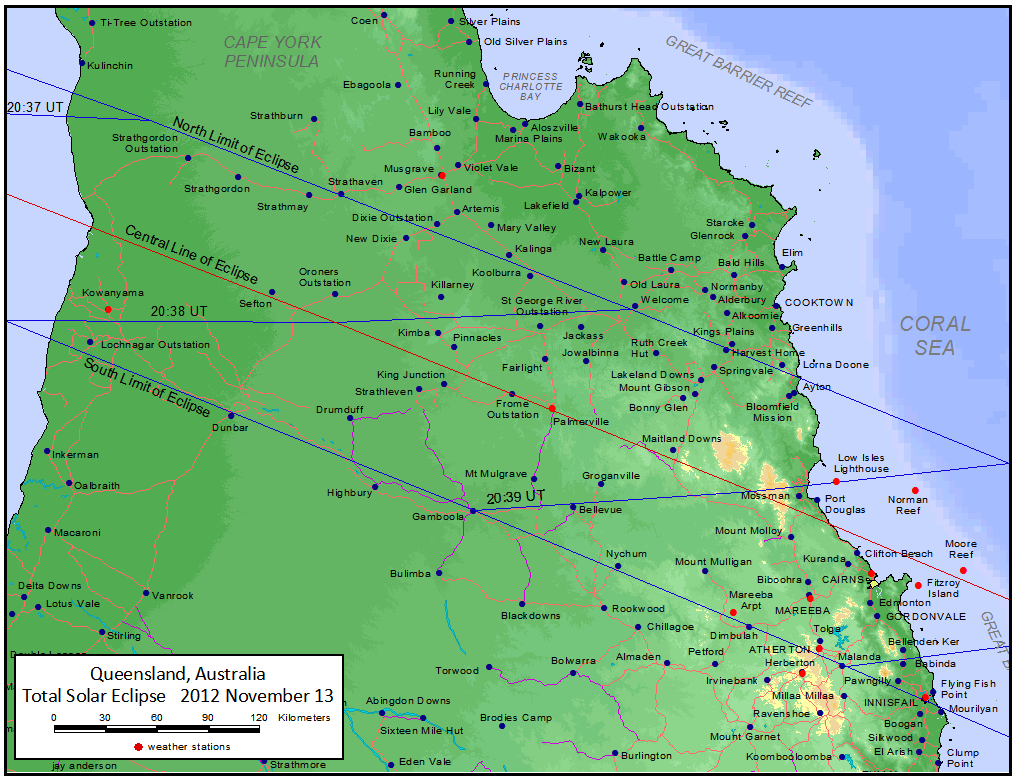-
 You
get to see one one of the most amazing natural phenonoma -
A total solar eclipse
is one of the most amazing natural
phenonema that you'll ever see. There's nothing else
quite like it. Every eclipse is a different length
- which is one of the most noticeable differences from
eclipse to eclipse. As totality approaches, the environment
noticably changes. Temperature drops of over 10 degrees
are not uusual. You'll be able to see "Bailey
Beeds" - which is where light from the sun
breaks through the uneven surface of the moon. The diamond
ring effect marks the beginning and end of totality
as a bright flash of light and is one of the most amazing
parts of the eclipse.
You
get to see one one of the most amazing natural phenonoma -
A total solar eclipse
is one of the most amazing natural
phenonema that you'll ever see. There's nothing else
quite like it. Every eclipse is a different length
- which is one of the most noticeable differences from
eclipse to eclipse. As totality approaches, the environment
noticably changes. Temperature drops of over 10 degrees
are not uusual. You'll be able to see "Bailey
Beeds" - which is where light from the sun
breaks through the uneven surface of the moon. The diamond
ring effect marks the beginning and end of totality
as a bright flash of light and is one of the most amazing
parts of the eclipse.
-
You get to travel all over the world - The most recent eclipse was in visible in Easter Island in 2010. Upcoming eclipses can be seen in Queensland in 2012, Spiztzbergen in 2015, Indonesia in 2015, across the mainland United States in 2017 and, finally, Chile / Argentina in 2019. That doesn't include annular or partial eclipses. We've already been to South Australia (2002), Libya (2006) and China in 2009 for totality. You don't get too much more diverse than that.
-
A different experience every time - The environment noticably changes during an eclipse. If animals are around (as they were in China) they'll prepare to, and actually, goto sleep as though it were night time. Conversly, in the Libyan desert in 2006 there were no animals but we did get a 360 degree sunset effect. With totality approaching, the temprature drops noticeably - 10 degrees is not unusual. Shadow bands (wavy lines of alternating light and dark) are often also present during solar eclipses – they were very noticeable in Libya and not present at all at Hangzhou. Shadows cast on the ground will appear to be much harsher than usual and the edges will be very well defined.
-
Eclipses aren't just for astronomers - Right enough, the "Instrument Wallahs" will be there - but don't let that put you off and don't disturb them when they're setting up their kit or during totality. (You have been warned!) Trust me on this - the spectacle of seeing one of the worlds most phenomenal, errr, phenoma (different every time!) while globe-trotting around the world isn't enough to keep you happy then there's no helping you. You don't have to be an astronomer to appreciate the spectacle or change in enviornment.
-
Photographic challenge - Practice safe sun (your retina is delicate and irreplaceable) if you want to observe or photograph any eclipse. There's several ways you can approach this challenge. Even with a simple point and shoot-type camera, it's possible to get some pretty good shots of the environment. Peruse eclipse pictures on Flickr for an idea of what you can achieve. A long lens and tripod are necessary if you want to photograph the eclipse itself - but the efforts are usually worth it. There's some exellent imagery from the 2006 Solar Eclipse right here and here which shows you what can be achieved.
